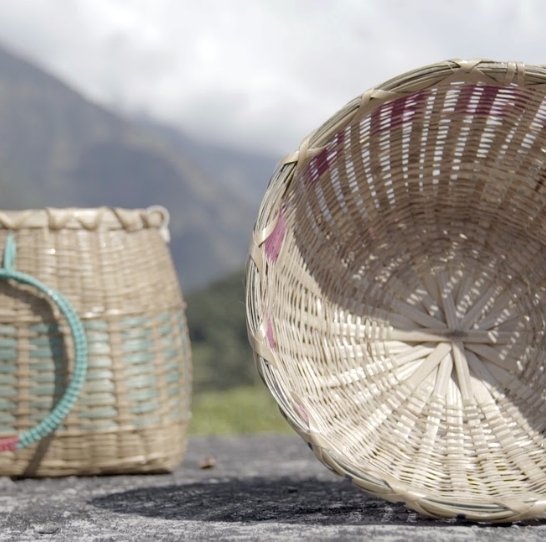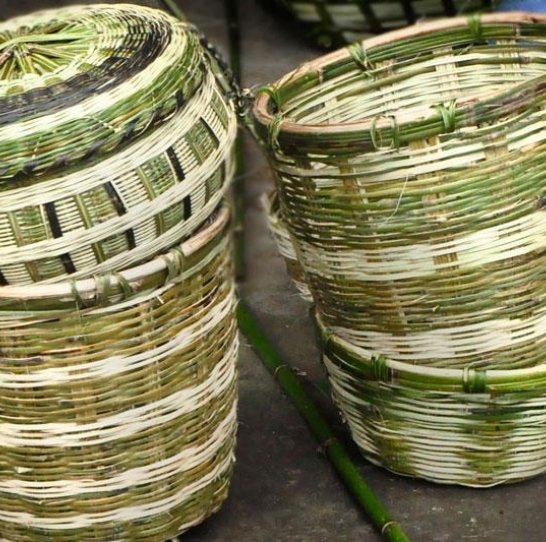
Ringal Craft
Ringal Craft is a traditional art form from Uttarakhand, India, using a type of dwarf bamboo called ringal. Ringal is a versatile and durable material that grows in the forests of the Himalayas at altitudes of 1800 to 3000 metres and lasts up to 20-25 years. Artisans known as Rudiya make a variety of products from it, combining traditional techniques with modern applications.
- Ringal is smaller than other bamboo species, with four main types being used:
- Gole ringal (Arundinaria falcata)
- Tham ringal (Arundinaria spathiflorus), which is used for roofing traditional houses
- Dev ringal (Arundinaria falconeri), used for religious purposes
- Ginwas ringal (Chimnobambusa jaunsarensis), valued for its flexibility and durability
- Traditional ringal products include:
- Baskets (Solta or Ghida) for transporting dung, fodder and other items
- Swing cloths (Suppa), mats (Moreta), brooms (Bhwanu) and ceremonial containers (Kandi)
- Roofing material for temporary houses
- Ink sticks (Kalam) and supports for climbing plants


- Challenges for the ringal craft:
- Depletion of raw materials and shrinking traditional markets
- Competition from cheaper, machine-made products
- Lack of awareness of government support and programmes
- Declining interest from younger generations
- Efforts to revitalise and promote ringal craft include:
- Initiatives such as the National Bamboo Mission (NBM)
- Training programmes for artisans to produce modern products
- Promotion of ringal cultivation on private and communal land
- Ringal craft in Uttarakhand has been given a Geographical Indication (GI) which recognises its unique qualities and helps protect its authenticity.